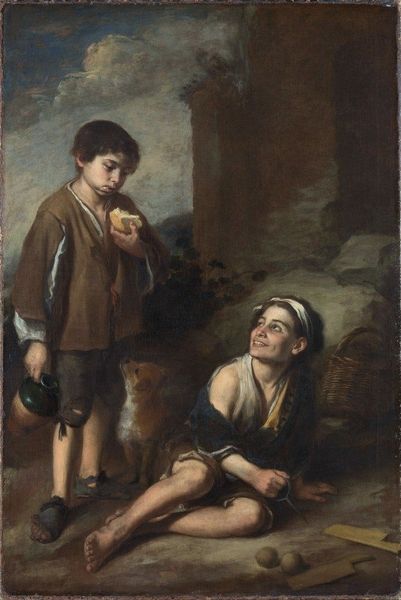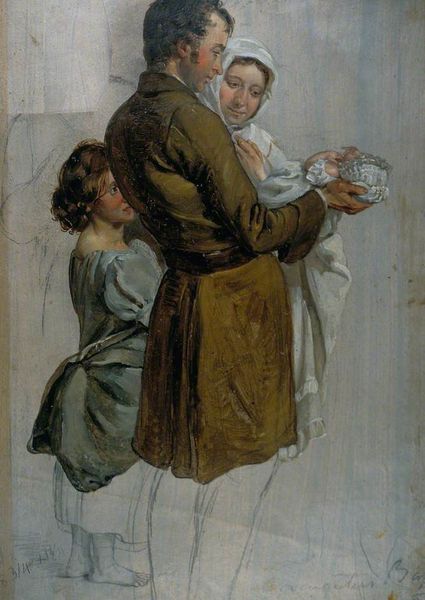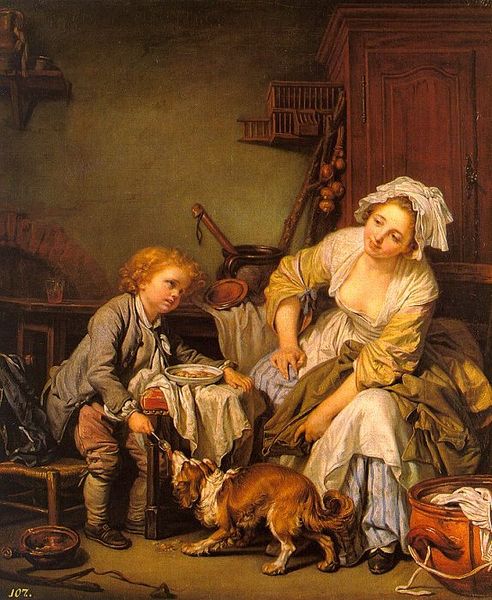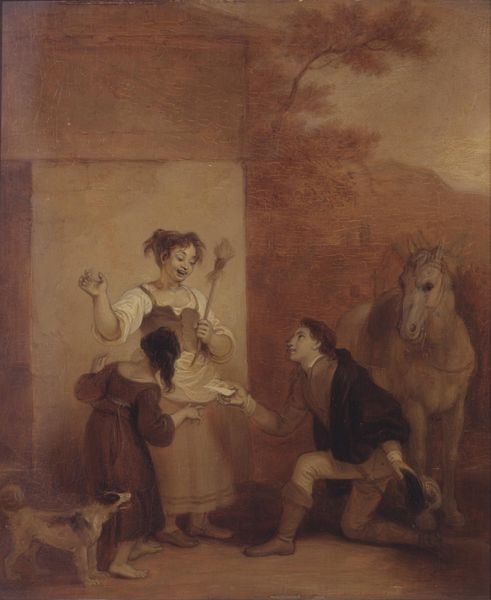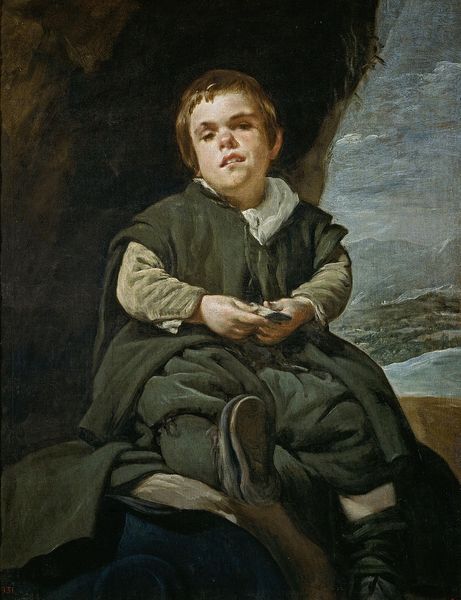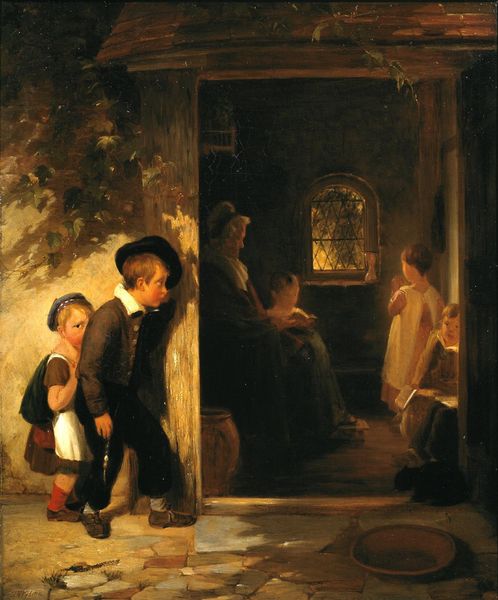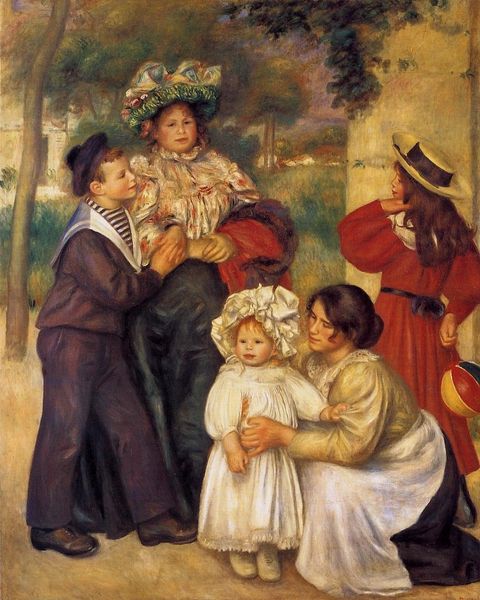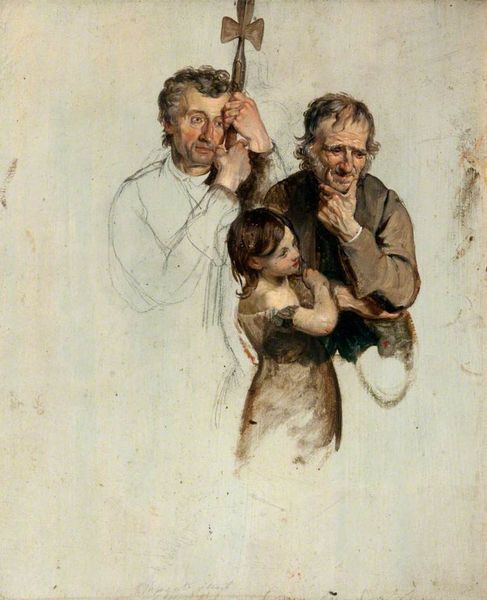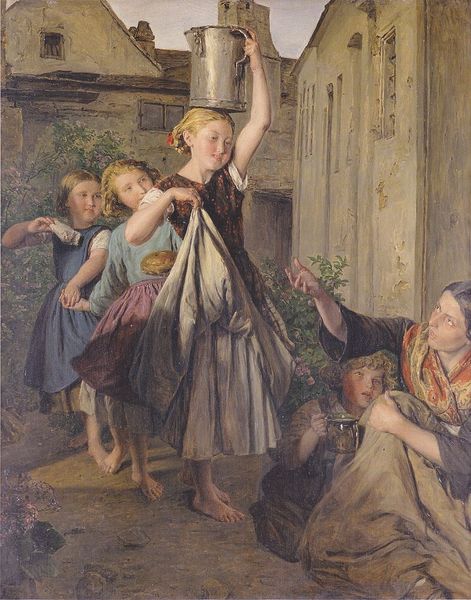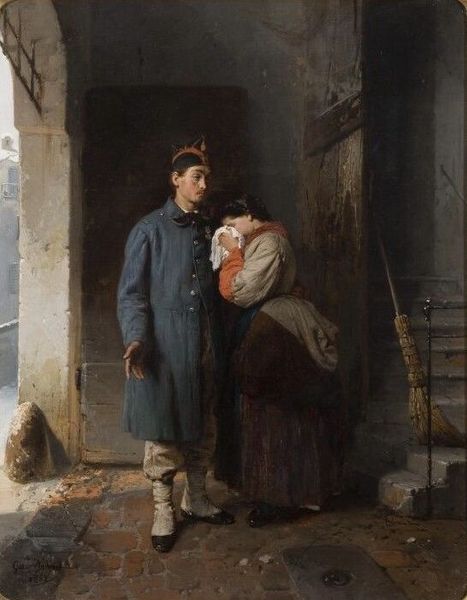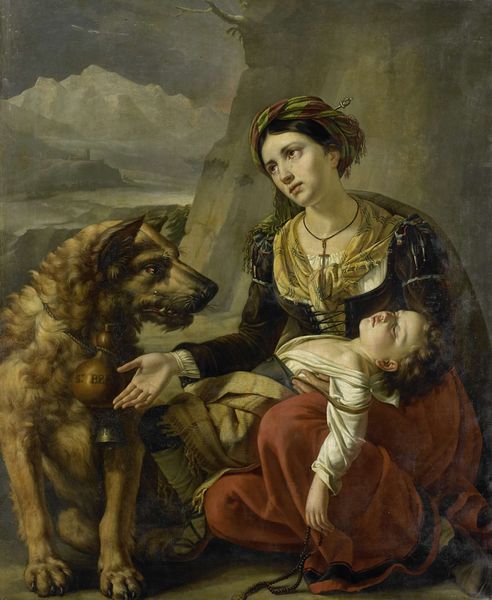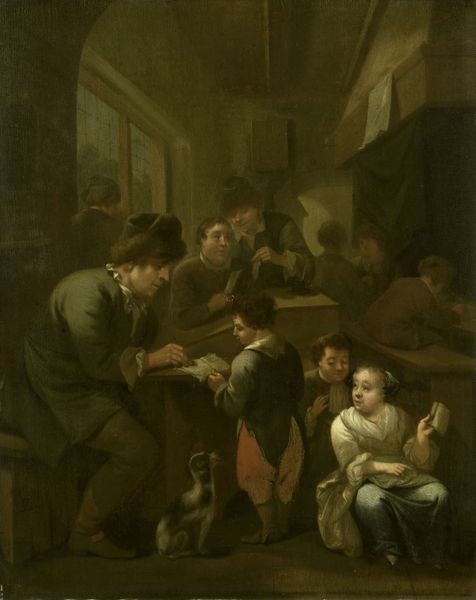
oil-paint
#
oil-paint
#
oil painting
#
romanticism
#
genre-painting
#
portrait art
Copyright: Public domain
Curator: This is "Disputing the Billet" painted by George Harvey in 1827. It's an oil on, well, we don't have the support specified here, but likely canvas. A fine example of early 19th century genre painting. Editor: Oh, I love the tenderness in this scene. There's this lad kneeling, clutching a dog as if it’s the most important thing in the world, and the woman behind him, gazing out with such a knowing expression. There’s something heartbreakingly sweet about it, isn't there? Curator: Harvey was a Scottish painter who found great success in depicting scenes of everyday life, especially those highlighting rural customs. The "billet" in the title likely refers to a lodging assignment, perhaps connected to military service. So this seemingly simple domestic scene might touch upon broader social themes, such as family anxieties related to war. Editor: That adds a layer of depth I hadn't immediately considered! I was caught up in the simple human connection; that shared vulnerability in the boy's posture. Curator: He’s tapping into the romantic sensibilities of the era. People started to appreciate the emotion, innocence, and authenticity they associated with humble folk, especially those far removed from the pressures of city life. And we see this throughout painting of the era as urbanisation increased rapidly, influencing sentimental responses in visual culture. Editor: It’s amazing how paintings like this serve as little time capsules. You see the fashion, hint at socio-economic conditions, but the human expressions are the constant throughline that hits you across the centuries. And the loose brushwork is fascinating; it's like a captured moment, not quite fully formed, as though the past is glimpsed only momentarily. Curator: Indeed. The very lack of precise detail makes the image even more accessible. It feels more immediate. That sense of being incomplete mirrors our fragmented understanding of the past itself, a story we can never fully know, only piece together. Editor: A fragment that speaks volumes, really. You can see Harvey took a lot of care in composing this, despite the sketchy execution. There's an underlying empathy in this little slice of life. Curator: Ultimately, "Disputing the Billet" reminds us of the deeply intertwined relationship between personal experience and socio-historical context, allowing us to consider how both artists and audience interpreted those values in the early 19th century. Editor: It certainly nudges us to consider a broader perspective of the era's art, and hopefully invites new questions when appreciating works from this period. Thanks for this!
Comments
No comments
Be the first to comment and join the conversation on the ultimate creative platform.

